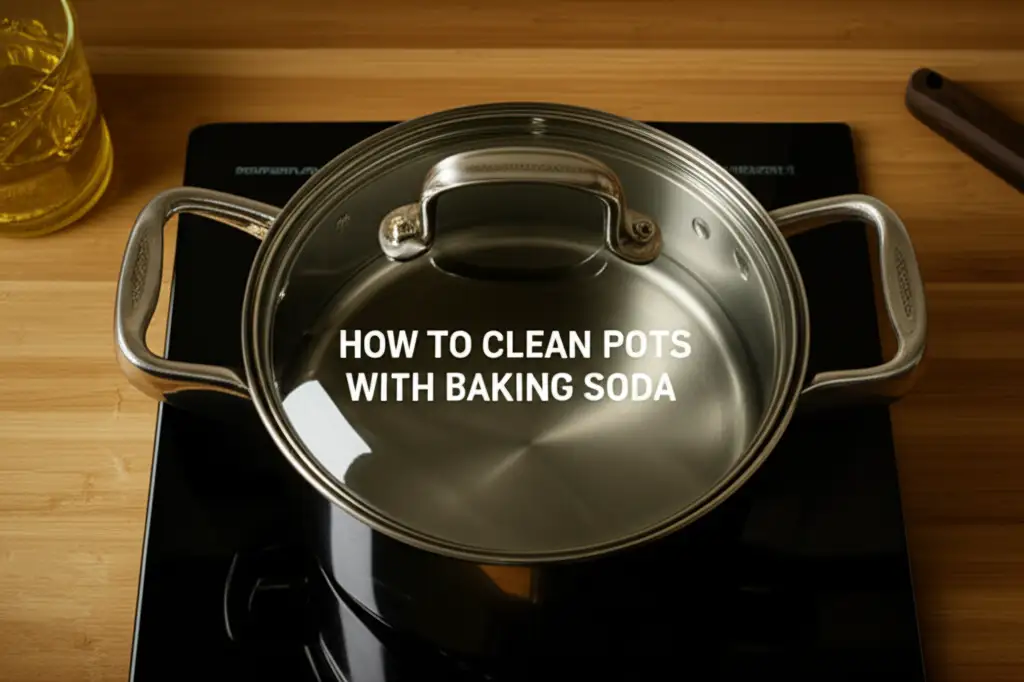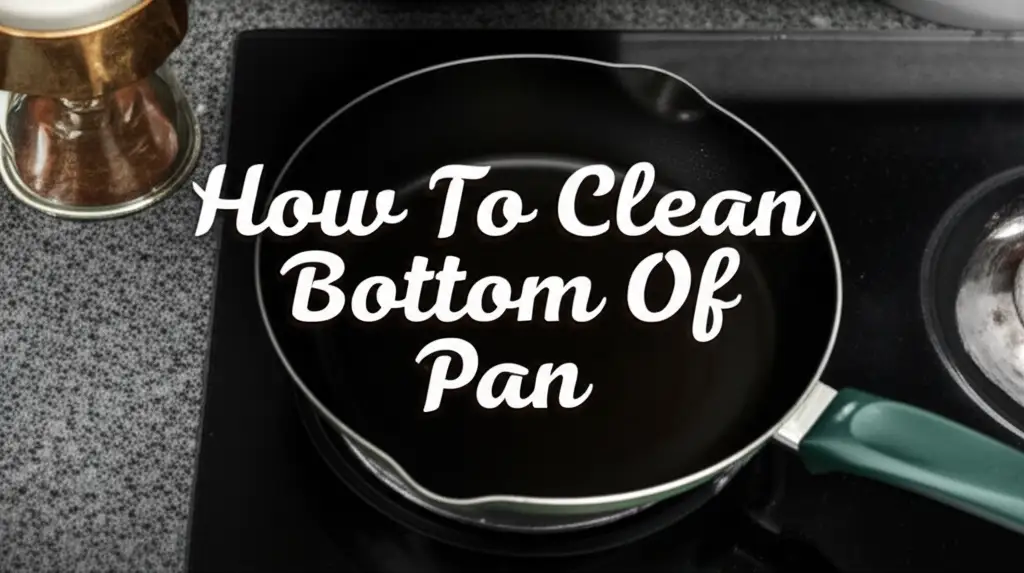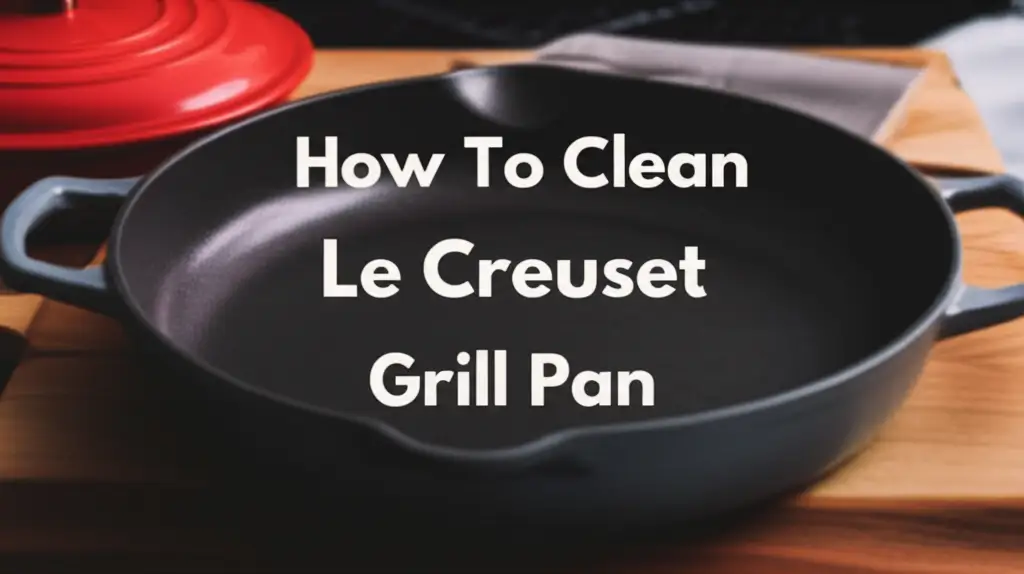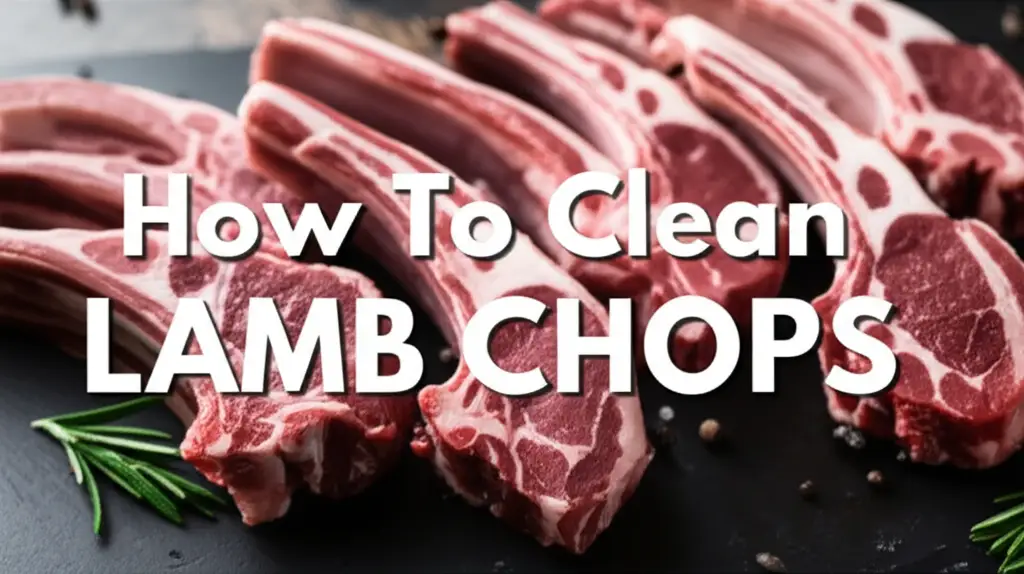· Kitchen Cleaning · 12 min read
How To Clean Pots And Pans
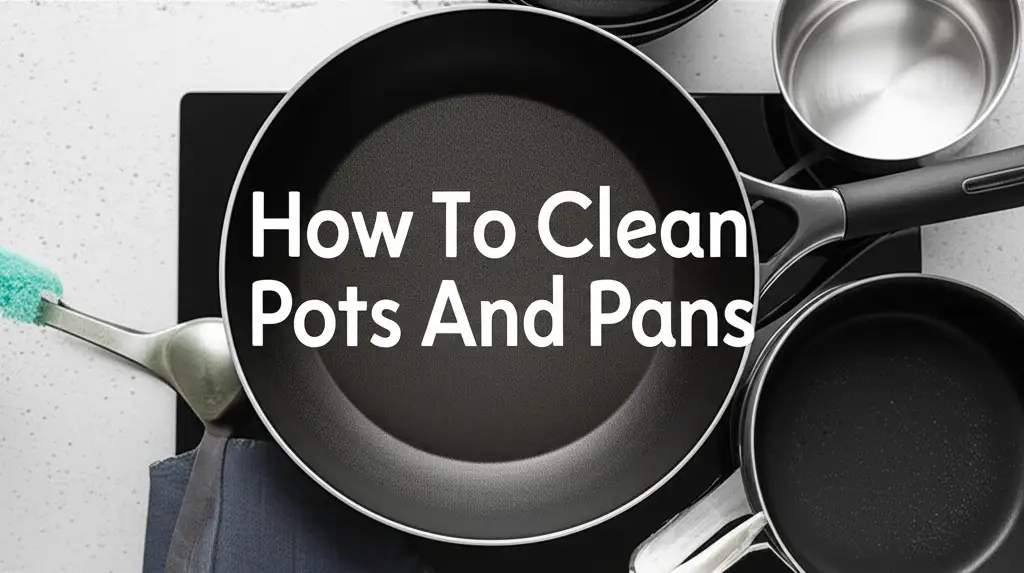
How To Clean Pots And Pans
Cooking is fun, but cleaning up is a different story. You often find stuck-on food or greasy residues on your pots and pans. These messes make cleaning tough. Sometimes, you might feel like giving up on a favorite piece of cookware.
Do not worry. I have faced these challenges too. I know how frustrating it is when food sticks or grease builds up. This guide helps you get your cookware sparkling clean again. We will cover different materials and cleaning problems. We will make your cleaning routine easier and more effective.
Takeaway
- Understand your cookware material before you clean it.
- Clean pots and pans quickly after use for easier removal of food.
- Use baking soda and vinegar for stubborn stains.
- Address burnt food and baked-on grease with specific techniques.
- Maintain your cookware to keep it looking new and working well.
To clean pots and pans, first identify their material. Then, choose the right cleaning method for burnt food, grease, or stains. Soak, scrub gently, and use natural cleaners like baking soda or vinegar for best results. Finish by drying completely to keep them in good condition.
Understanding Your Cookware Materials
Different pots and pans need different cleaning care. Knowing your cookware material helps you clean it well. It also stops you from causing damage. Let us look at common types and their basic needs.
Stainless steel is durable and often dishwasher safe. It can get discolored or have burnt-on food. Non-stick surfaces are easy to clean but scratch easily. You must use soft tools and gentle cleaners on them. Cast iron needs special care to keep its seasoning. It requires hand washing and drying right after cleaning.
Copper pots look beautiful but can tarnish. They need specific polishes to keep their shine. Glass or ceramic cookware handles heat well and washes easily. They are good for many cooking tasks. Aluminum is light and heats fast but can stain. It also reacts with acidic foods. I always check what my pan is made of before I start scrubbing. This simple check saves a lot of time and effort.
Basic Daily Cleaning: Keeping Pans Ready
Regular cleaning keeps your pots and pans in top shape. It also stops food and grease from building up. This makes future clean-ups much easier. I always try to clean my cookware right after I use it. This small habit makes a big difference.
For most pans, start by scraping out loose food. Use a rubber spatula or a wooden spoon. Then, add warm water and a little dish soap. Let it sit for a few minutes if food is slightly stuck. This helps loosen the debris. Use a sponge or a soft brush to clean the inside and outside. Rinse the pan well under running water. Make sure all soap is gone. Dry the pan completely with a clean towel. Air drying can cause water spots or rust, especially on cast iron.
For non-stick pans, never use abrasive scrubbers. They will ruin the surface. A soft sponge is all you need for these. For stainless steel, you can use a slightly more abrasive sponge if needed. But always test a small area first. Remember, quick cleaning after each use stops many problems. It keeps your kitchen items ready for your next meal. This simple step makes your daily cooking life smoother.
Tackling Stubborn Stains: Burnt Food and Baked-On Grease
Sometimes, cooking goes wrong, and you end up with burnt food. This food sticks hard to your pots and pans. Baked-on grease also makes them look dirty and feel sticky. These problems need stronger cleaning methods. But do not worry, you can handle them.
For burnt food, the first step is to soak the pan. Fill the pan with warm water and a few drops of dish soap. Let it sit for several hours or overnight. This soaking softens the burnt bits. After soaking, try to gently scrape off the loosened food. If it still sticks, you can try another method. Adding baking soda to the water helps. You can also make a paste of baking soda and water. Spread it over the burnt area and let it sit. Baking soda is a gentle abrasive that helps lift burnt food. For more specific methods, you can learn how to clean pots with baking soda.
Baked-on grease often appears as a sticky, dark film. It usually forms on the outside bottom of pans. To clean this, you can use a mix of baking soda and vinegar. Sprinkle baking soda on the greasy spots. Then, spray or pour a little white vinegar over it. It will fizz. Let this mixture sit for 15-30 minutes. The reaction helps to break down the grease. After it sits, scrub with a brush or a sturdy sponge. For very tough grease, you may need a specialized cleaner. Some cleaners are designed to cut through tough grease. If you have specific problems, you can find out how to clean baked-on grease from pans. This method also works well for the outside bottom of pans. Knowing how to clean burnt grease from bottom of frying pans means your cookware will look good from all angles.
Specific Cleaning for Stainless Steel Pots and Pans
Stainless steel cookware is popular because it lasts long. However, it can get discolored or have food stick to it. This happens especially when you cook at high heat. Cleaning stainless steel needs specific steps to keep its shine. I use certain tricks to make my stainless steel pots look new.
If your stainless steel pan has burnt food, do not use steel wool. It can scratch the surface. Instead, fill the pan with water and add a few tablespoons of baking soda. Bring the water to a boil on the stove. Let it simmer for 10-15 minutes. The boiling water and baking soda work together to loosen the burnt bits. After it cools, you can easily scrape off the residue. This method is effective and safe for your pans. You can find more details on how to clean stainless steel pans burnt.
For everyday cleaning or to remove minor stains, baking soda is still your friend. Make a paste with baking soda and a little water. Apply this paste to the pan. Gently scrub with a soft cloth or sponge. Rinse well. To remove water spots or bring back shine, use white vinegar. Spray or wipe vinegar on the clean pan. Then buff it dry with a microfiber cloth. Vinegar helps to remove streaks and makes the steel sparkle. This simple step brightens your cookware. For a detailed guide on using baking soda for these pans, check out how to clean stainless steel pans with baking soda. These methods help keep your stainless steel cookware looking its best for years.
Caring for Non-Stick and Cast Iron Cookware
Non-stick and cast iron pans are very different. They each require specific care to perform well. Ignoring their needs can ruin them. I learned this the hard way with a scratched non-stick pan.
Non-stick pans are great for easy cooking and cleanup. But their coating is delicate. Never use metal utensils or abrasive scrubbers on them. These will scratch the surface and make it lose its non-stick properties. After cooking, let the pan cool down. Then wash it with warm, soapy water and a soft sponge. For sticky food, soak the pan for a few minutes before washing. Dry it completely before storing. This stops water spots and keeps the coating intact. Proper care extends the life of your non-stick pans.
Cast iron pans are known for their durability and even heating. They need seasoning, which is a layer of baked-on oil. This seasoning makes them non-stick and protects them from rust. Never use dish soap on cast iron, as it removes the seasoning. After cooking, scrape out any food. Then, rinse the pan with hot water. Use a stiff brush or a plastic scraper to remove stuck food. If needed, you can use a small amount of coarse salt as an abrasive. Rinse the pan and immediately dry it with a towel. Place it on low heat on the stove for a minute or two. This helps evaporate any remaining moisture. After drying, apply a thin layer of cooking oil to the entire surface. Wipe off any excess. Store it in a dry place. This keeps the seasoning strong and prevents rust. Taking good care of cast iron makes it last generations.
Restoring Shine: Cleaning Outside and Bottom of Pans
The inside of your pots and pans gets most of the attention. But the outside and bottom can collect grease and grime too. This buildup can make your cookware look old and dirty. Cleaning these areas improves how your pans look. It can even help them heat more evenly.
Baked-on grease on the outside bottom of pans is a common problem. It often looks dark and feels sticky. You can clean this with a simple paste. Mix baking soda with a small amount of hydrogen peroxide. Apply this paste to the greasy areas. Let it sit for at least 30 minutes, or even a few hours for tough spots. The hydrogen peroxide helps lift the grease, and the baking soda provides gentle abrasion. After it sits, scrub with a stiff brush or a non-scratch scouring pad. You will see the grime start to lift away. Rinse the pan well. This method works very well for many types of cookware.
Another effective solution is a mix of baking soda and white vinegar. Sprinkle baking soda generously on the outside bottom. Then, spray white vinegar over the baking soda. It will create a fizzing reaction. Let this sit for 15-20 minutes. The acid in the vinegar reacts with the baking soda to break down the grease. Scrub with a brush or a sturdy sponge. For very stubborn buildup, you might need to repeat the process. I have had great success cleaning the outside of my pans using this method. It brings back their original look. For more specific advice, you can learn how to clean outside bottom of pans. Remember to always dry your pans completely after cleaning them to prevent new stains.
Preventative Measures and Storage Tips
Cleaning pots and pans is easier when you prevent major messes. A few simple habits keep your cookware cleaner for longer. Proper storage also helps maintain their condition. I always follow these steps to reduce my cleaning time.
First, always let your pans cool before washing them. Pouring cold water into a hot pan can cause warping. This is especially true for non-stick and cast iron. It can also cause food to stick even more. Second, use the right amount of oil or fat when cooking. Too little can cause food to stick. Too much can lead to excessive grease buildup. Third, use appropriate heat settings. High heat can burn food quickly onto the pan surface. This creates tough stains. Matching your heat to your cooking needs reduces burnt food incidents.
When storing your pots and pans, prevent scratches. For non-stick pans, place a paper towel or a soft cloth between them. This protects the delicate coating. You can also use pan protectors, which are felt discs. For cast iron, make sure it is completely dry before storing. This prevents rust. Stack pans carefully to avoid nicks and dings. Hanging pans on a rack saves space and prevents scratches. It also lets them air out fully. Good storage habits keep your cookware organized and protected. These small efforts make a big difference in the long run.
FAQ Section
How do I clean burnt food from a non-stick pan without damaging it? To clean burnt food from a non-stick pan, let it cool completely. Then, fill it with warm, soapy water. Let it soak for 15-30 minutes. Use a soft sponge or cloth to gently wipe away the burnt bits. Avoid metal scrubbers or harsh chemicals. Rinse and dry the pan well.
Can I use baking soda and vinegar together on all types of pans? Baking soda and vinegar are generally safe for most pots and pans like stainless steel or ceramic. They are excellent for removing stubborn stains and grease. However, avoid using vinegar on cast iron, as it can strip the seasoning. Always rinse thoroughly after using them. You can learn more about how to clean with vinegar and baking soda.
How often should I deep clean my pots and pans? Deep cleaning frequency depends on use. For heavily used or stained pots, deep clean them monthly or quarterly. For light use, you might only need to deep clean every few months. Daily cleaning after each use helps reduce the need for frequent deep cleaning.
What is the best way to remove water stains from stainless steel pans? Water stains on stainless steel pans are often mineral deposits. To remove them, wipe the pan with a cloth dampened with white vinegar. The acid in the vinegar dissolves the minerals. Buff the pan dry with a clean, soft cloth. This restores shine and prevents new water spots.
Is it safe to put my pans in the dishwasher? Check the manufacturer’s instructions for your specific pans. Stainless steel and some ceramic pans are often dishwasher safe. Non-stick, cast iron, and copper pans are typically not dishwasher safe. Dishwashers can damage their coatings, seasoning, or finish. Hand washing is often safer for these types.
Conclusion
Cleaning your pots and pans does not have to be a chore. With the right knowledge and tools, you can keep your cookware looking great. We covered methods for different materials, from daily washes to tough stains. You now know how to handle burnt food and stubborn grease.
Remember to identify your cookware material first. Use gentle methods for non-stick. Maintain the seasoning on cast iron. Use baking soda and vinegar for effective cleaning on many surfaces. Proper care makes your pots and pans last longer. It also ensures they perform well every time you cook. Make these cleaning habits a part of your routine. Your kitchen will thank you. Keep your pots and pans sparkling clean for many more delicious meals.
- pot cleaning
- pan cleaning
- cookware care
- burnt food removal
- grease removal
- stainless steel cleaning
- non-stick care
- baking soda cleaning

